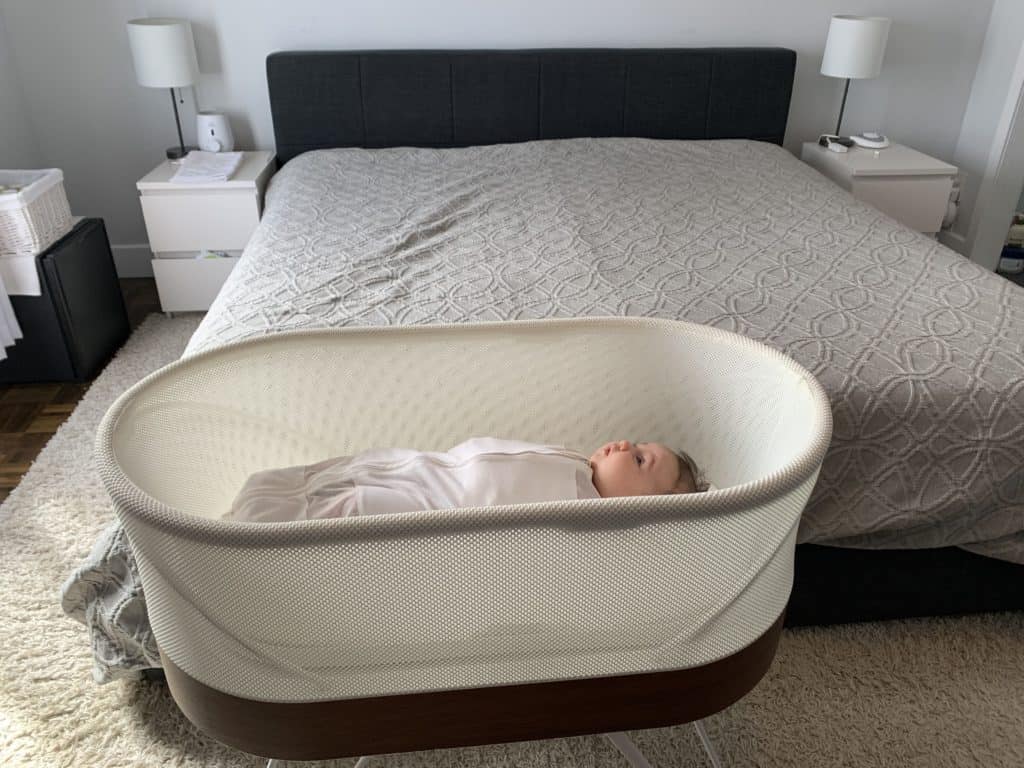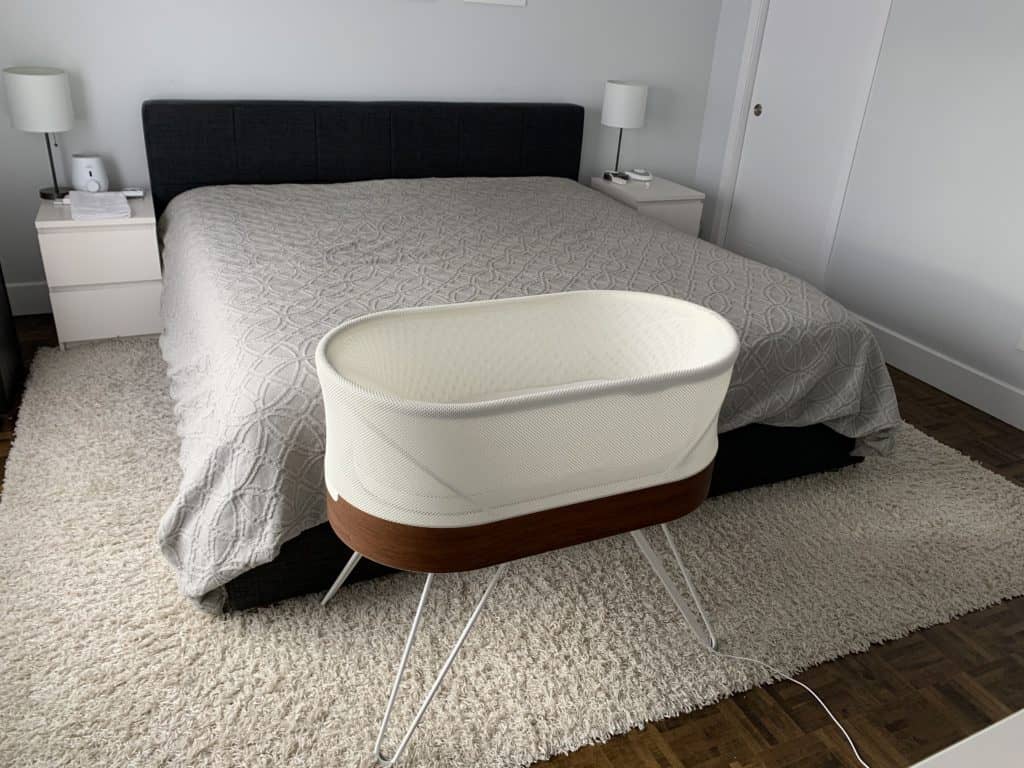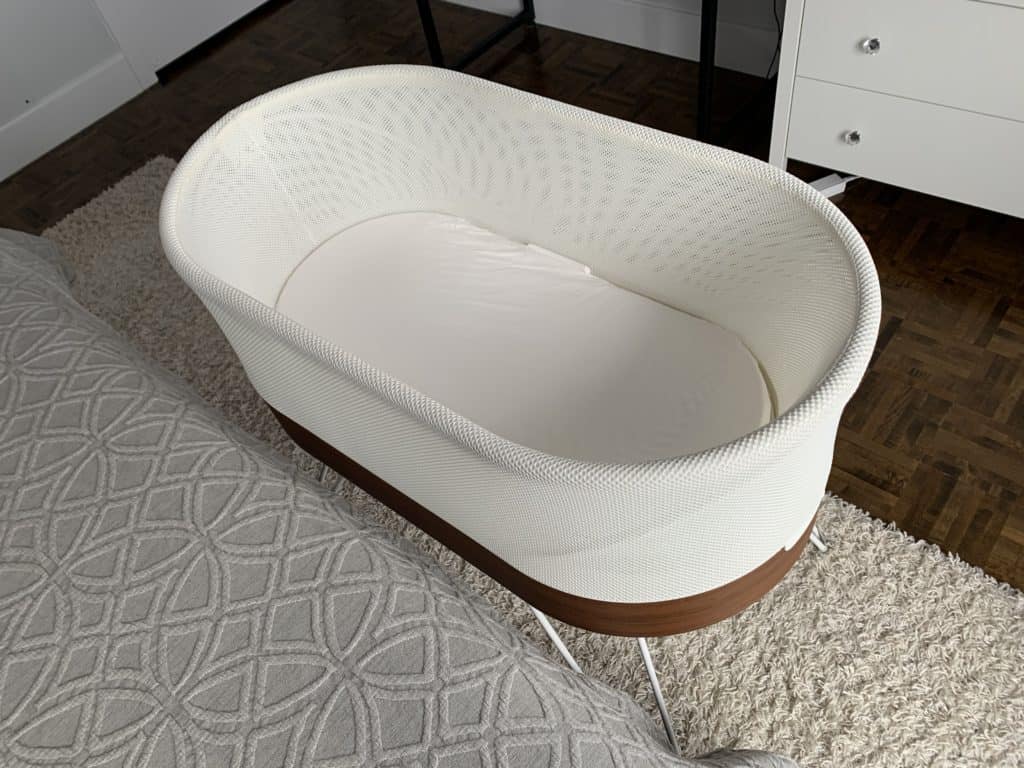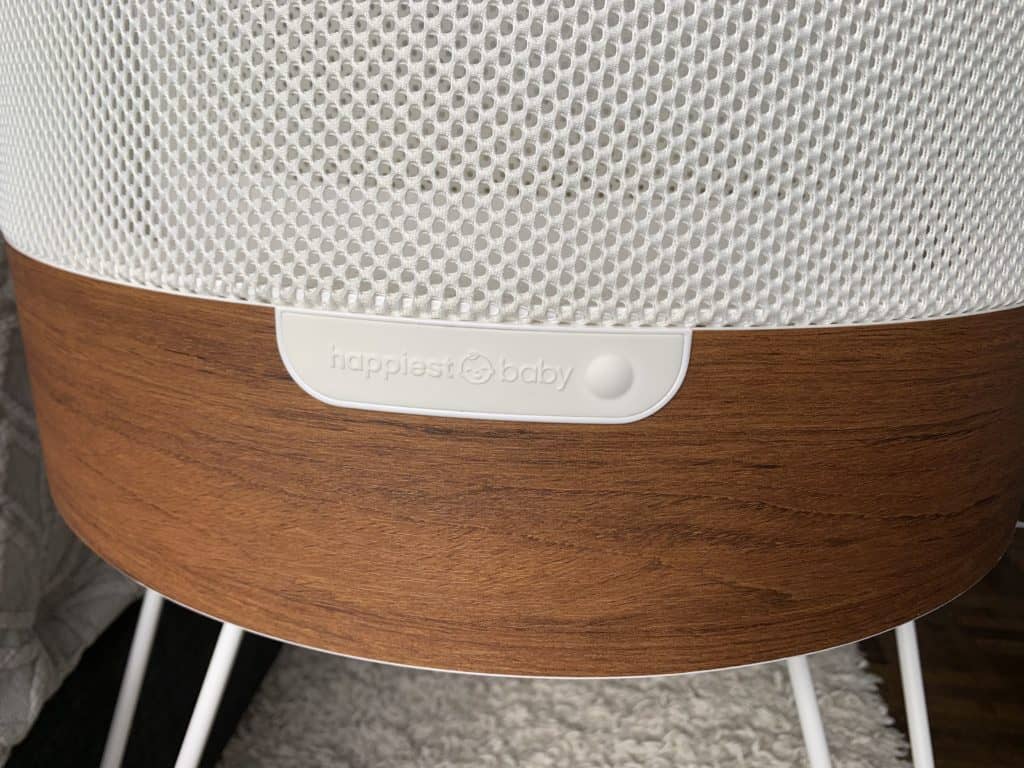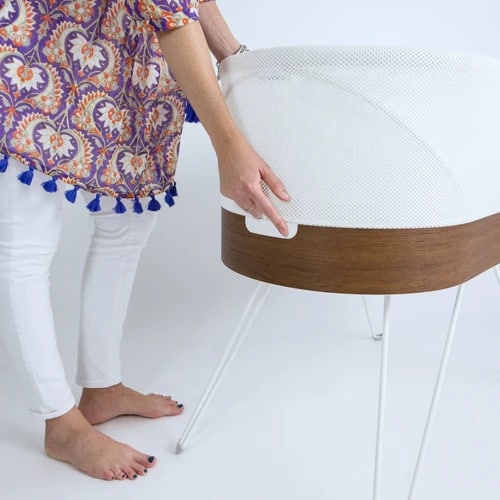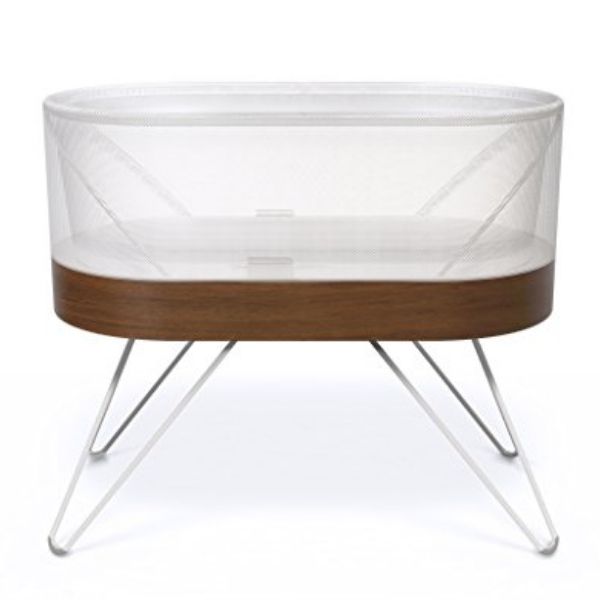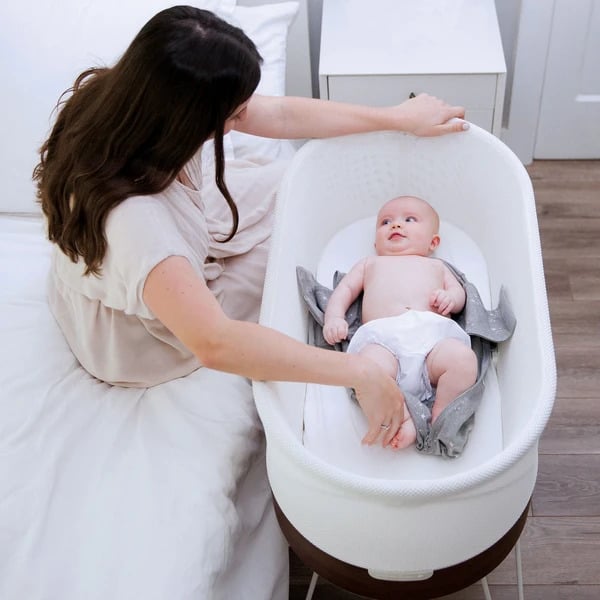There’s a serious gap that needs filling regarding the safety of the SNOO bassinet.
I spent the better part of the day analyzing every single resource on the topic.
Frankly, if I didn’t use the bassinet to raise two kids, I’d be overwhelmed and confused because most people seem to just guess and talk in buzzwords.
With the SNOO Smart Sleeper bassinet recently accepted into the FDA’s Breakthrough Device Program (fast-tracked to be reviewed as a medical aid in SIDS prevention), addressing any safety issues becomes urgent.
Still, there are definitely pieces of the puzzle missing.
The reasons for that are two-fold:
- The answers from experts are lax or incomplete
- The parents aren’t asking the right questions
I get it, and I’m not pointing fingers. It’s a complex topic.
But I’ll try to right that wrong by covering the matter from all possible angles:
- From daily life to long-term studies on the SNOO smart crib
- From newborn safety to SIDS risk prevention
- From the safety of the gentle rocking motion to the swaddle
- Adds 1-2+ hours of sleep per night
- Automatically calms fussing… often in under a minute
- Ready 24/7 to help you soothe baby when you need to eat or catch some Zzz's
- Adds peace of mind by securing baby safely on the back
- Naturally sleep trains...with little need to cry-it-out
Who am I to talk about SNOO safety?
I believe I’m in a unique position to talk about SNOO‘s safety – for two reasons:
- I’ve raised two kids in it
- I’ve run this website for years now, and I’ve researched every single aspect of baby sleep safety
Long story short – it’s a complicated topic, and I believe I can help you understand it.
Let’s jump right in.
The “safest baby bed ever made” claim
This is the obvious place to start – the way Happiest Baby Inc. (the company making the SNOO) advertises their bassinet.
So, what’s that all about, and how come no one is disputing it?
The baby bed market is cutthroat. That sounds wrong, but it’s true – if the competitors could stop Happiest Baby from making the bold claim about SNOO‘s safety, they absolutely would.
But they can’t.
Because the claim is based on data – the number of sleep hours logged in the SNOO app without a single case of sudden infant death.
I don’t have the current numbers, but that number was 50 million in 2019 and over 75 million in the first quarter of 2020.
Since then, SNOO has only gained popularity among new parents, and I can safely assume it’s well over 120 million today.
Whatever the number is, no other bassinet can make that claim, which is why SNOO is toothing its horn with it.
A few commonly asked questions about SNOO’s safety
This section is the ‘meat’ of this guide.
I’ll first address some of the questions that pop in my inbox and move on to a few points that I really see mentioned, but they deserve to be a talking point.
Have babies died in the SNOO?
No, no baby has ever died in the SNOO, at least not from a case of SIDS.
It’s designed to prevent sudden baby deaths by keeping the little sleepers on their backs at all times. Furthermore, not a single baby injury has been reported.
I know this is a bold claim, and I took it as such. I searched far and wide, way beyond what the manufacturer is saying.
I have nothing shady to report.
The “baby died in SNOO” search
Let’s pause for a second here and recognize that SNOO is the only bassinet that’s measured by this standard.
It’s the only baby bed that parents google in this context.
About 600 people go to Google every month and type in the words “baby died in SNOO.”
If you were looking at any other crib or bassinet, you would never think to do that. It’s because no one is using zero death as a measuring stick for bassinet safety.
Except for SNOO.
I hope you get my point in this SNOO review.
I understand that it comes with the territory of advertising your product as “safest ever,” but I still feel this deserves a mention.
You can see the SNOO compared to other bassinets by following the links below:
Cradlewise vs SNOO | SNOO vs Mamaroo | SNOO vs Graco Sense2snooze | Babybjorn cradle vs SNOO | SNOO vs Halo bassinet
Federal safety standards and the SNOO
This is where most safety concerns stem from – the interpretation of the federal safety standards.
There’s a single point of confusion here, and some of the stuff I’ve read on the topic reads like intentionally misleading.
Here’s I mean exactly
I’ve seen people say that SNOO goes against the federal safety standards. Specifically, these standards state that you should stop swaddling your kid when they start to roll over. That happens between two and four months, and SNOO keeps a baby swaddled up to the 6-month mark.
The problem here is not looking into the reasons behind the swaddle safety standards.
These are in place because a swaddled baby might roll to the side and onto its tummy. This increases the SIDS risk because they might not be able to roll back.
In the SNOO, there’s no way for them to roll in the first place.
You can see what I mean by ‘misleading.’ Partial information is, in this case, worse than no information.
A caveat – there’s an upside to the baby rolling
The only argument that holds water isn’t directly related to safety – it’s about what delayed rolling might mean long term.
You could argue that there are times when the baby will be awake and still in the SNOO swaddle, meaning they can’t roll to the side.
Why is this important?
Because rolling when awake is a factor in the development of crawling instincts.
SNOO and babies prone to flat-head
I’ve also seen claims that SNOO somehow might increase the risks of developing flat head syndrome in babies who are prone to it.
If you ask me, this is a similar matter to the rolling.
The APP guidelines are pretty clear that babies should sleep on their backs. SNOO covers that part.
Apart from the time spent sleeping, you shouldn’t keep your baby on their back for prolonged periods. When they’re awake, they should move freely in a controlled, safe environment.
That goes whether they’re in the SNOO, another bassinet, or a swing.
What it all means for you
It means that you shouldn’t overuse the SNOO and that you should give your baby some tummy time – start slowly and build up to 15-minute supervised sessions every day.
Is SNOO safe for newborn sleep?
Yes, SNOO is safe for newborns because the swaddle and the SNOO sleep sack keep them on their back, and the swaying motion is not aggressive enough to pose any risk. The SNOO Smart Bassinet is great for newborn sleep and helping a fussy baby sleep, because of the rocking motion
Strapping the baby in the SNOO sleep sack might feel odd at first, but that’s what lowers the SIDS risk.
Still, you might not be comfortable with the rocking motion at higher intensities, especially if you’re a first-time parent.
Are there long-term consequences of SNOO?
There’s no data or logical correlation between SNOO and any long-term consequences or risks. If you’re concerned about the safety of a SNOO Smart Bassinet, you can always reach out to a sleep consultant.
There are, however, significant long-term risks associated with sleep deprivation.
Babies who have trouble sleeping have a much higher chance of experiencing both physical (stunted growth) and psychological issues (like attention and emotion control).
Extra safety layer – the motion limiter
If that happens, the SNOO app gives you the option to limit the motion intensity.
There are five intensity levels and, with the limiter on, the bassinet will never go past level two.
How I used the motion limiter
I’ve only used this for setting in the app for the first two months with my son. Once the perception of fragility went away, I turned the limiter off and never looked back.
If the initial intensity feels too high, you might want to know how the soothing works.
The cry detection kicks in when it recognizes fussing and turns on the soothing functions – gentle motion and white noise. The two combined create an environment that mimics the womb.
SNOO gently rocks as the baby calms down and stops completely after 10 minutes.
Why is this important?
Because it means it won’t just go on with the rocking if the baby cries for longer than 10 minutes. In this scenario, your kid needs human attention.
The safety of SNOO leg lifters
This is one of the topics that’s rarely talked about, and it is important because inclined sleepers aren’t safe.
If your baby spits up all the time or suffers from a stuffy nose, Happiest baby offers leg lifters. These will lift the baby’s head ever so slightly (2.5 degrees). Even a slight raise like this helps with reflux and stuffy noses but poses no risk.
An uncomfortable topic – sudden unexpected infant death
I won’t waste your time with definitions and explanations because, if you’re expecting, you what it is. Sudden Infant Death Syndrome is an unexplained death of any child under one year of age.
I’m interested in the sleep aspect of the whole story.
What causes infant sleep death?
You might see SIDS referred to as crib deaths, too, because it’s where many of the cases happen.
By their very nature, these sudden deaths don’t have an explanation.
For the purposes of this analysis, I’ve split the potential culprits into two groups:
- Those we can’t control (like brain defects of the breathing center)
- Those we can control (including unsafe sleep practices like stomach sleeping).
AAP guidelines on sleep and infant sleep deaths
AAP’s position is that babies should only sleep on their back in the first year.
These guidelines have been in place since 1992, and the last time they were revised (2005), the position was only confirmed.
They also put special stress on stomach sleeping as a significant SIDS risk factor . In various studies, stomach sleeping has been shown to increase SIDS risk by anywhere from 170 to 12,900 % (source).
Happiest Baby and the pediatrician behind it
The SNOO safety analysis wouldn’t be complete without looking at the company behind it (Happiest Baby) and the famous pediatrician who invented it – Dr. Harvey Karp.
Based on everything I’ve seen, Happiest Baby is a reliable American company with solid customer service practices. For the SNOO, they won twenty-two honors, including the National Sleep Foundation’s Innovation award in 2017.
You might know Dr. Karp as the author of the famous book “Happiest Baby On the Block’ or the pediatrician behind the 5Ss of baby soothing. Both inspire nothing but confidence.
Snoo and baby safety – the bottom line
It’s easy to get lost in all the noise of all the potential risks.
Maybe. Somehow. Possibly.
My advice here would be to cut through the clutter and look at the truly important stuff – the sleep deprivation and, more importantly, the SIDS risk.
I’d say it’s the 80-20 rule, but it’s more like the 95-5 rule here.
I know it’s easy for exhausted parents to shrug SIDS off as an “it-happens-to-someone-else” type of thing.
If that’s even remotely a possibility for you, SNOO might kill two birds with one stone – eliminate the safe sleep concerns and offset the marital stress that comes with raising a sleepless baby.
That’s what it did for me.
- Adds 1-2+ hours of sleep per night
- Automatically calms fussing… often in under a minute
- Ready 24/7 to help you soothe baby when you need to eat or catch some Zzz's
- Adds peace of mind by securing baby safely on the back
- Naturally sleep trains...with little need to cry-it-out
Related reads: SNOO review | SNOO rental | rent vs buy the SNOO | SNOO sales | SNOO criticism
Paul is a passionate dad who founded Upside Dad to share his parenting journey with other new parents. He graduated from Concordia University and worked as a test engineer for over a decade. Paul loves dad jokes and craft beer.
Learn more about Paul and Upside Dad here.
